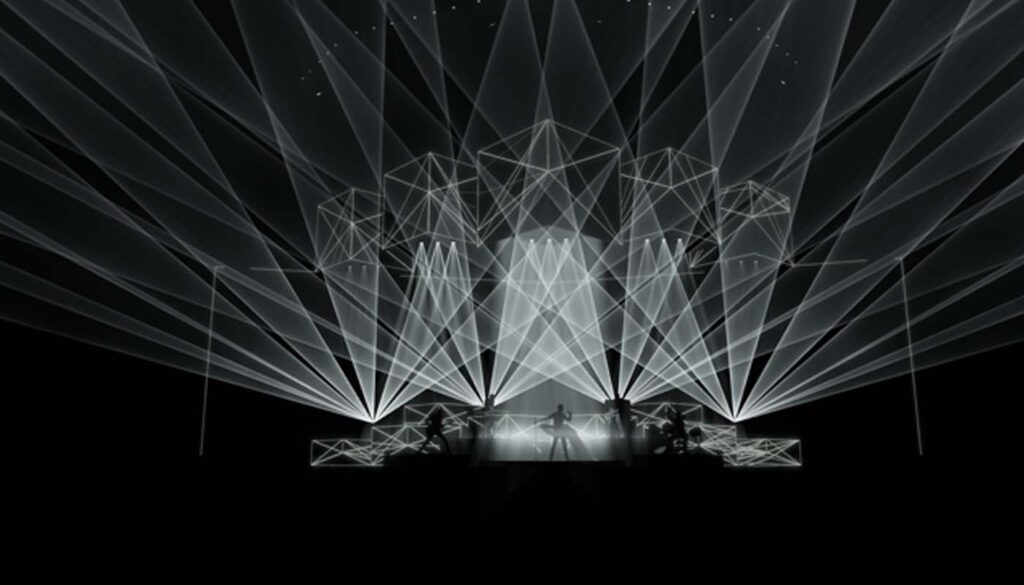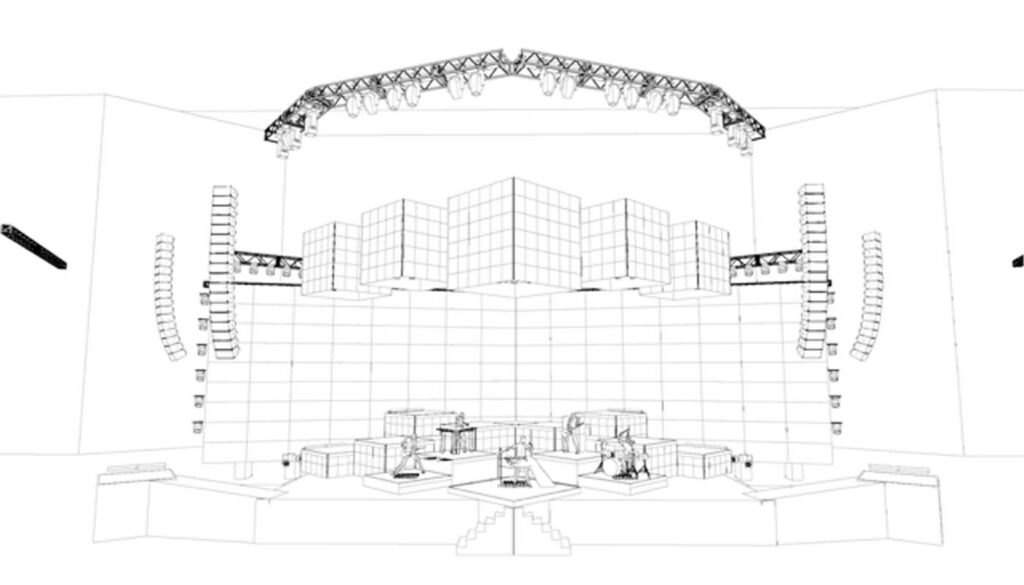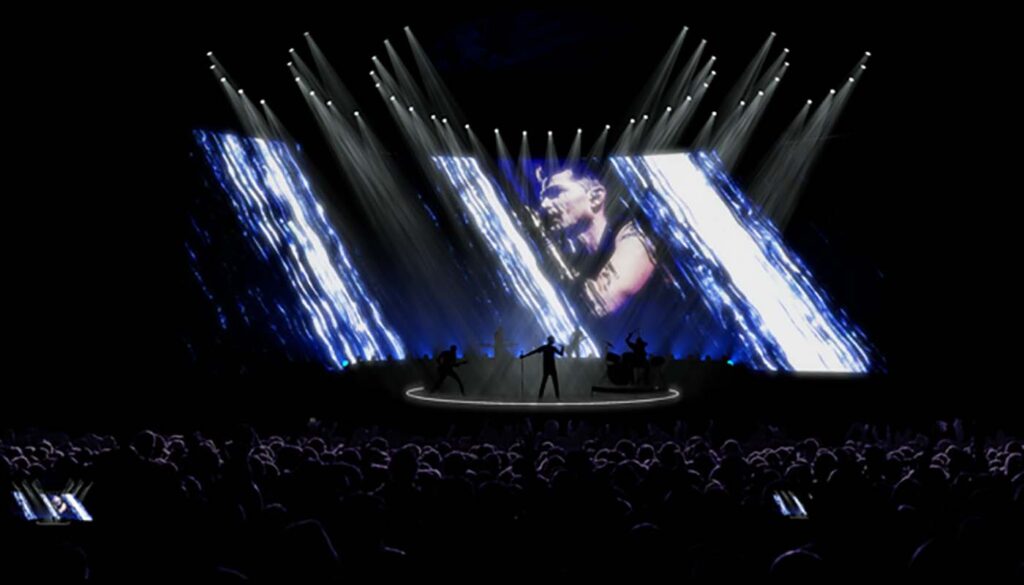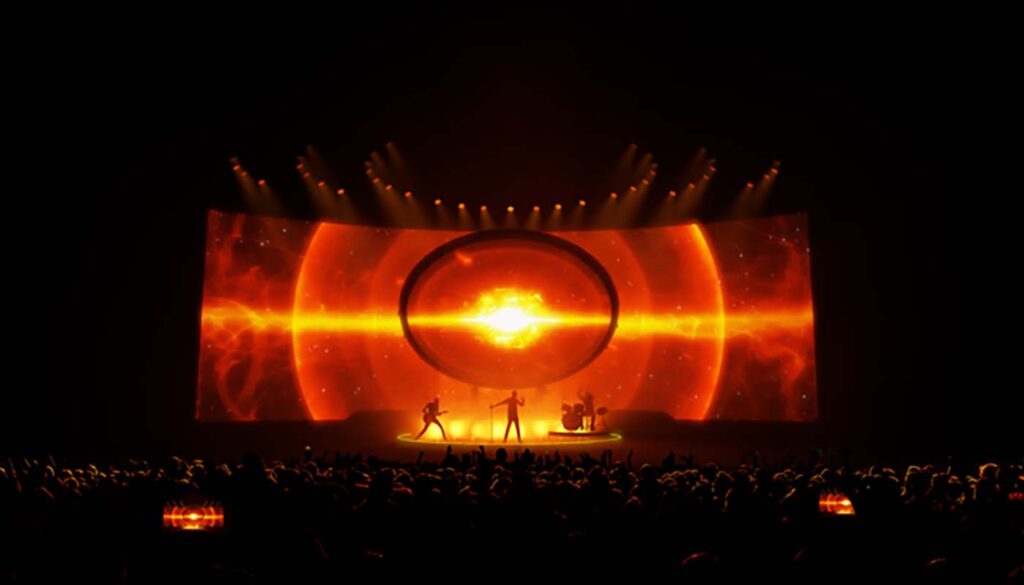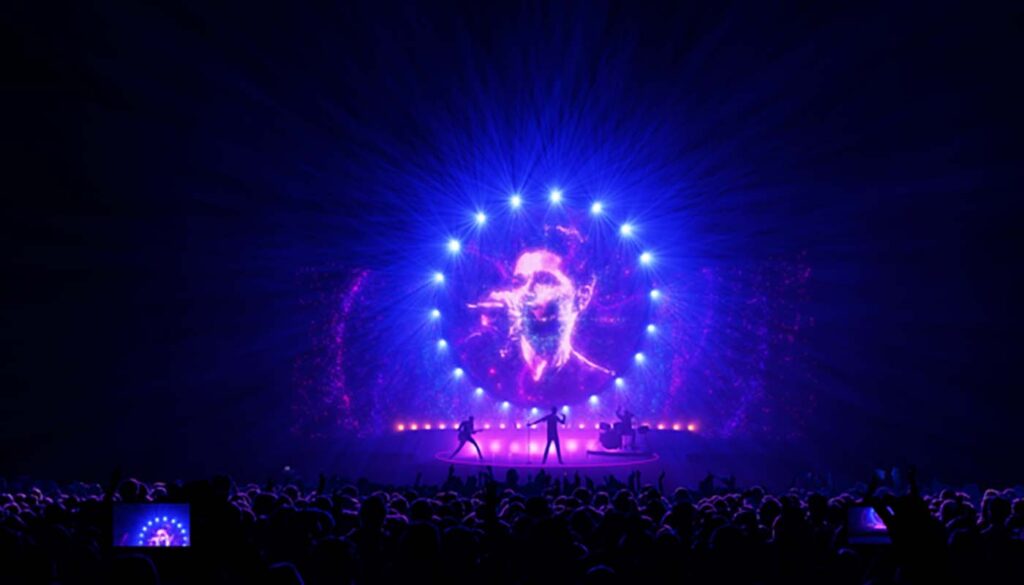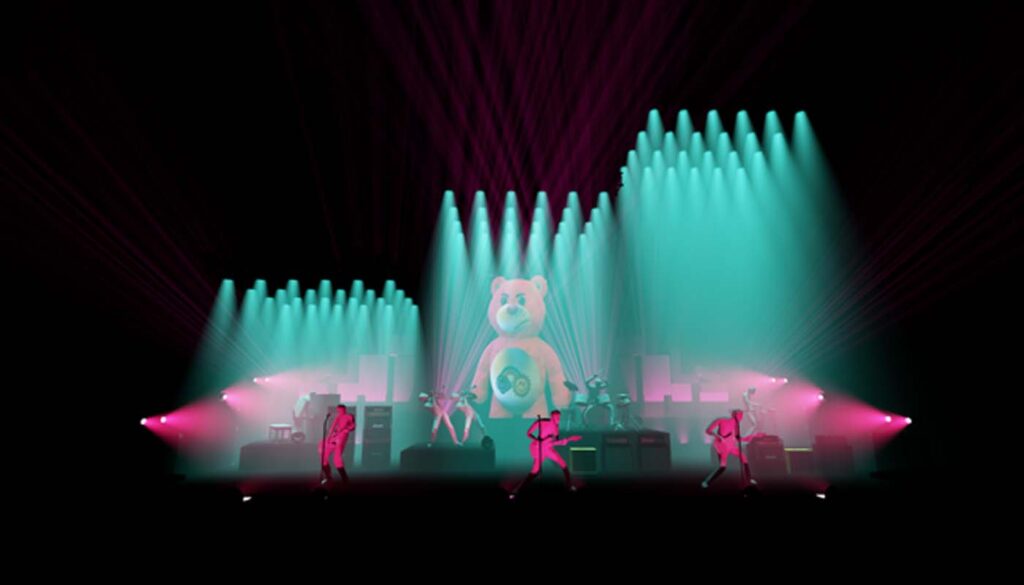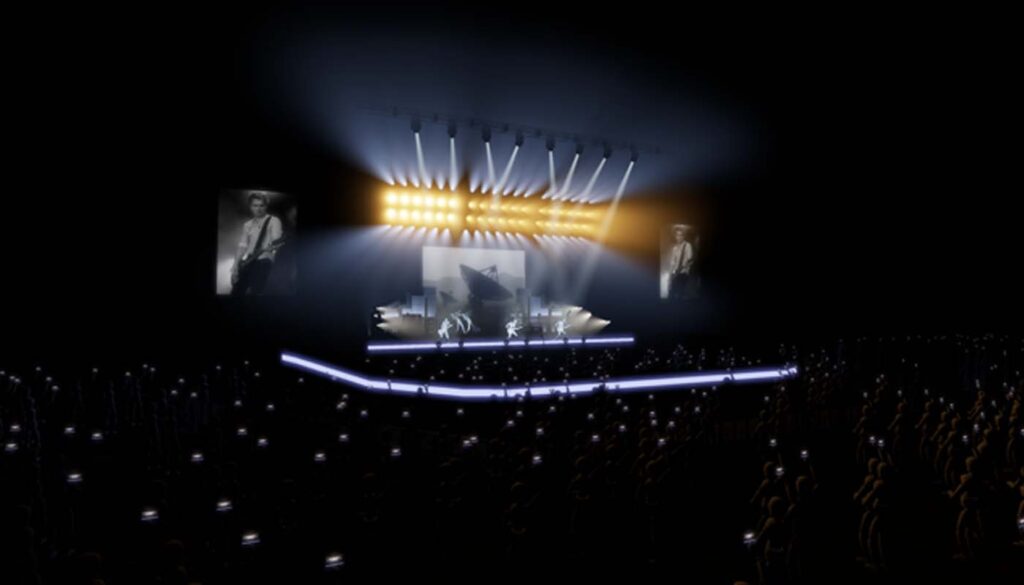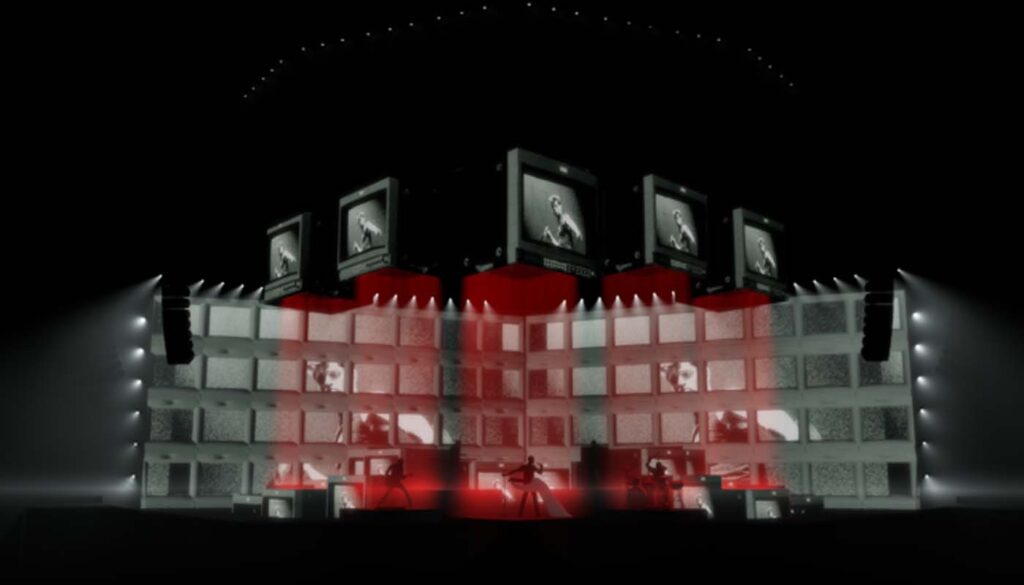London-based design house MIRRAD is a thriving consultancy with designers of the caliber of Dave Cohen (Leftfield, Arcadia) and Tom Campbell (Maisie Peters, Bring Me the Horizon) and Jamie Thompson (The Script, Eros Ramazotti). For the MIRRAD team, always producing creativity under pressure, Wysiwyg is a core tool. CAST spoke to Jamie Thompson to find out more . . .
Using WYSIWYG:
“We’ve got seven Perform licenses – five active that go out with people to clients and sites and then another two that are available permanently here in the studio, for our Wysiwyg suites.”
Intro to WYSIWYG:
“I was first introduced to WYSIWYG years ago. Remember when they used to give out free CDs at exhibitions like PLASA? I think it was WYSIWYG 3. And when I was in university, studying Theatre Practice specializing in Lighting Production, it became commonplace for us.”
“At MIRRAD we’ve used WYSIWYG for so long, we know it really well and everything works for us, so our workflow is pretty quick. We can produce really good renders and plots. We’ve kind of learned what’s possible and found all the different elements that it can do, to the best standard. It’s something we’re really comfortable with. It just works for us.”
The Design Process:
“In our design process, we’ll start by throwing a lot of ideas on WYSIWYG . And it’s great because it’s so quick for just playing with and developing ideas, seeing if they work. And if an idea doesn’t work, you can park it and try something else. Then, when we get to a kind of structure of a design that works, we can build on that. So WYSIWYG takes us all the way from initial conceptualizing to sending out full pitches of the finished design.”
Standout Features:
“Design mode – basically, being able to visualize something very quickly. I’d say that’s probably one of the key aspects of WYSIWYG , and probably the most important one for us. It’s being able to bring your ideas to fruition.”
“For us, another big feature is AutoPatch. Being able to pre-program and plug it into a lighting desk obviously means a huge saving in time and cost, because we can sit in a studio for two weeks before an arena tour and pre-program the entire show. Then, we can spend the pre-production time during rehearsals at the arena simply finessing the show, rather than wasting that time starting from scratch. You’re already 90% there – you’re ahead of the game.”
“It’s nice to be going into the high-stress environment of an arena tour with a planned product that you can be confident is going to loo very similar to the reality. It means you’re not up until five in the morning every day, so you come out of production rehearsals feeling a lot better about life, rather than feeling like it’s the end of the world and you haven’t slept for five days! It’s good for morale, let’s say.”
Video Integration:
“At MIRRAD we do most of the scenic design and video design too. Our content team provides mapped content, and we use the maps to create those elements in WYSIWYG . So, if you’ve got unique shapes of video – non-standard sizes – you’re not having to spend loads of time editing images. We can pipe videos in and see how it’s going to look – all the real-time video, with the lighting. Then and then we can go to the client and say ‘This is how it’s going to look. What do you think?’”
Tool Selection:
“WYSIWYG has always been the industry standard as lighting software, and from a visual viewpoint and in programming it’s still unsurpassed for accuracy, especially with generic lights. It’s got all the subtleties you’ll need – which is all the more important if you’re programming a theatrical-style show.”
“It’s a package that can do everything, but generally, as a design company, we don’t tend to do any of the patch. We found from experience that you can kind of ‘muddy the water’ if you create a patch and send it to a crew chief, because then they’re trying to figure out what’s going on in your mind. From our point of view, it’s better to have the crew chief do it, so it’s all logical in their mind – because they look at it every day. If there’s a problem, they need to be able to figure it out.”
“We do use the paperwork element, in that we will export plots, build a template, and send that to the rental company for them to extrapolate the information. The paperwork side is very useful if you’re checking – it’s a really powerful tool.”
The Pre-Vis Landscape:
“We know how to get the absolute most out of it. We can import our own crowds and rendered people, like band members. We’ve developed our processes, bringing in things to make the renders look as real and unique as possible. We know CAST has developments in the pipeline that will make the pre-vis even more high-powered. It’ll be great if they can pull it off – and I’ve no doubt that they will.”
WYSIWYG as Sales Tool:
“We constantly use WYSIWYG as a sales tool. That’s the biggest tool in our arsenal. We generally send out pitch decks to our clients and without that, it would be very difficult to get across to them what we’ve created. We’re a long way away from doing sketches on the back of cigarette packets! For us, the competition is so high that you have to be putting out really good products. WYSIWYG helps us to get there.”
Tech Support:
“It’s rare that an artist comes to us six months before a tour – generally it’s a month before, so there’s always a time pressure. Over the years we’ve developed a good relationship with Dino and the rest of the CAST team, so any time we hit a problem that we can’t figure out ourselves, we ping them the show file, and they’ll review it and offer a couple of solutions to achieve our vision. Customer support is very quick for us, we have a great rapport with them.”
Wrapping Up:
“WYSIWYG is very intuitive, and it’s still our main tool. For us, it’s invaluable. It forms the foundation of what we deliver to clients.”
